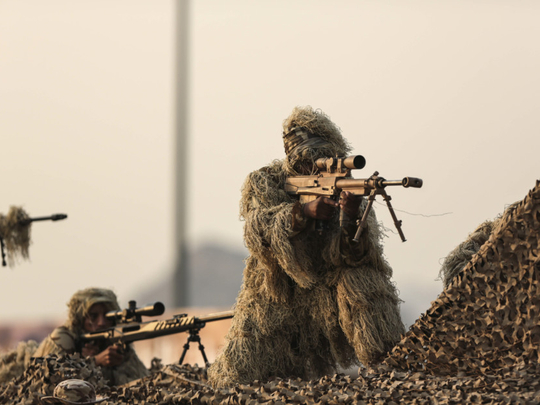
Beirut: If Gulf Cooperation Council (GCC) joint military exercises were too few to add value in the past, recent plans for the creation of a central command introduced sharp improvements and, by universal acknowledgment, steady progress. Still, dramatic regional developments compelled Saudi Arabia to hold new manoeuvres with Egypt, Turkey and other countries.
In 1983, GCC states created a joint military force known as Peninsula Shield, which conducted frequent modest bilateral joint exercises. Between 1983 and 2010, ground and air units from all six GCC states — though mainly from Saudi Arabia — carried out several multilateral exercises. Riyadh perceived Peninsula Shield as a necessary regional unit that ought not replace its vanguard forces, though it would be a mistake to conclude that Riyadh did not see value in it. On the contrary, if the Kingdom’s armed forces were the backbone of GCC armies, and the other five countries’ troops were all vital components, the GCC force was its firm hand that gained more value after 2010.
This steadfastness was reinforced between April 16 and 27 April, 2014 when Saudi Arabia conducted massive military exercises at Hafr Al Batin with the participation of nearly 130,000 troops. Operation Saif Abdullah (Sword of Abdullah), which was followed by a large parade at the King Khalid Military City attended by senior officials, showcased the Kingdom’ military might in a rare public display of combat aircraft, armour, and for the first time, the CSS-2 ballistic missiles.
The significance of showing the missiles was intended to send multiple messages to state actors around the world and specifically Iran. In the words of the Saudi Chief-of-Staff, General Hussain Al Qabail, the Saudi armed forces were ready to “defend our holy places and our achievements... and [while] we don’t intend to attack anyone because it’s not the Kingdom’s policy,” the officer clarified that the manoeuvres intended to raise the training level of the armed forces, test their preparedness to deter enemy attacks, and defend the country from aggressors.” Although uncharacteristic, the show of force telegraphed to Iran as well as the kingdom’s Western allies, the notion that Riyadh and the GCC states were ready, and could assume, a large portion of the defence burdens. Interestingly, the exercises emphasised that any future Gulf security architecture would have to take into account Saudi views, which could no longer be overlooked.












